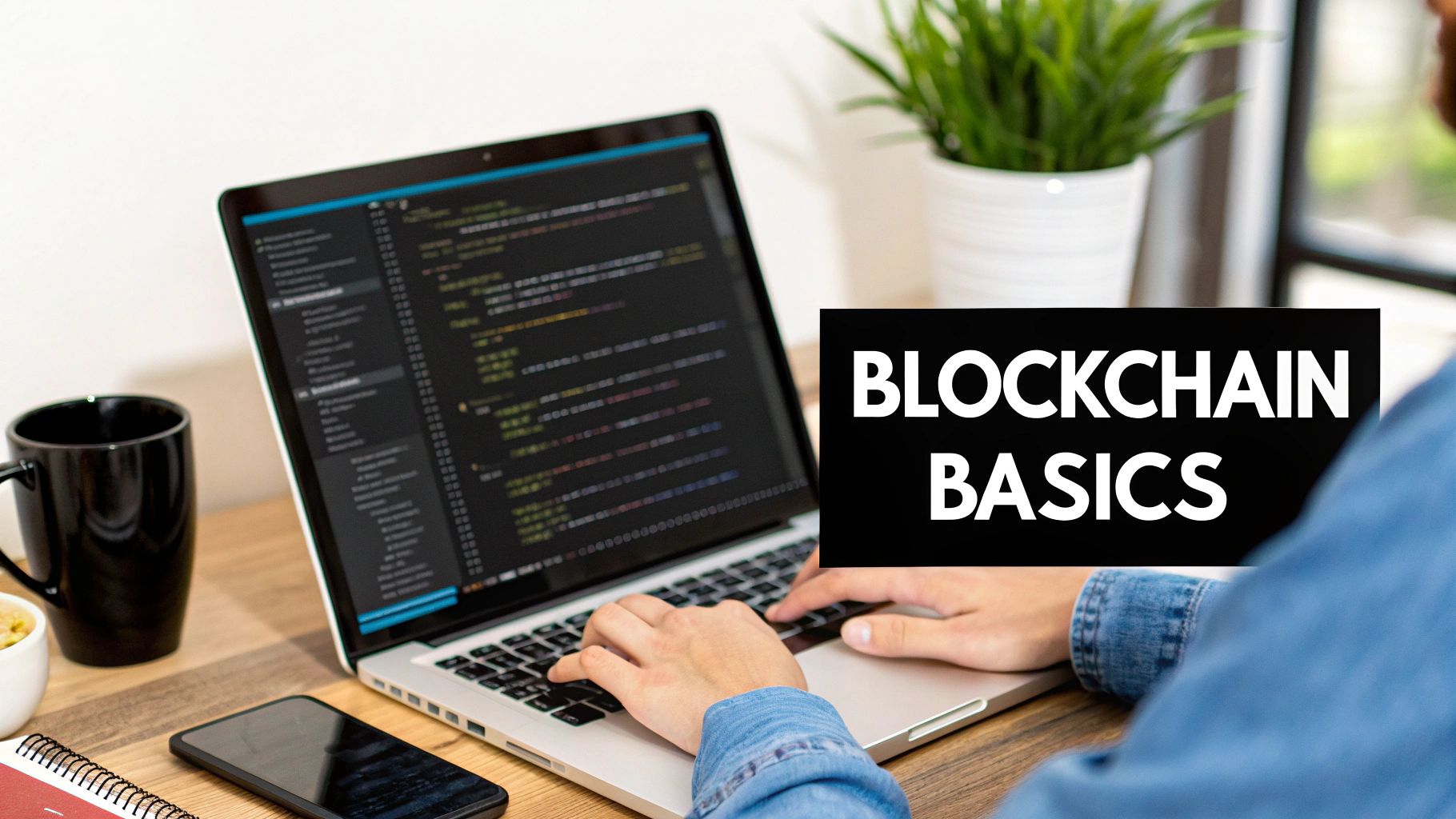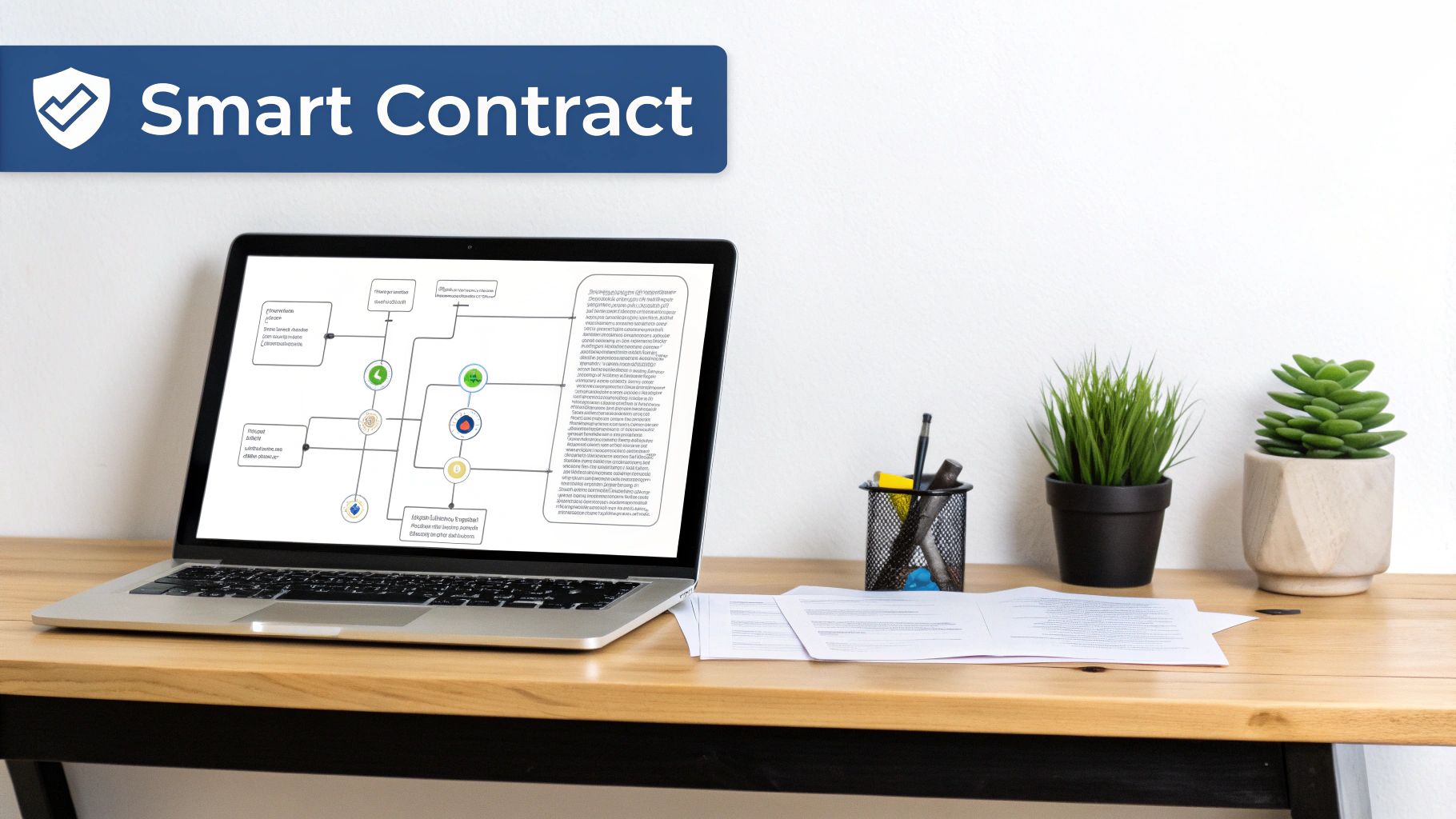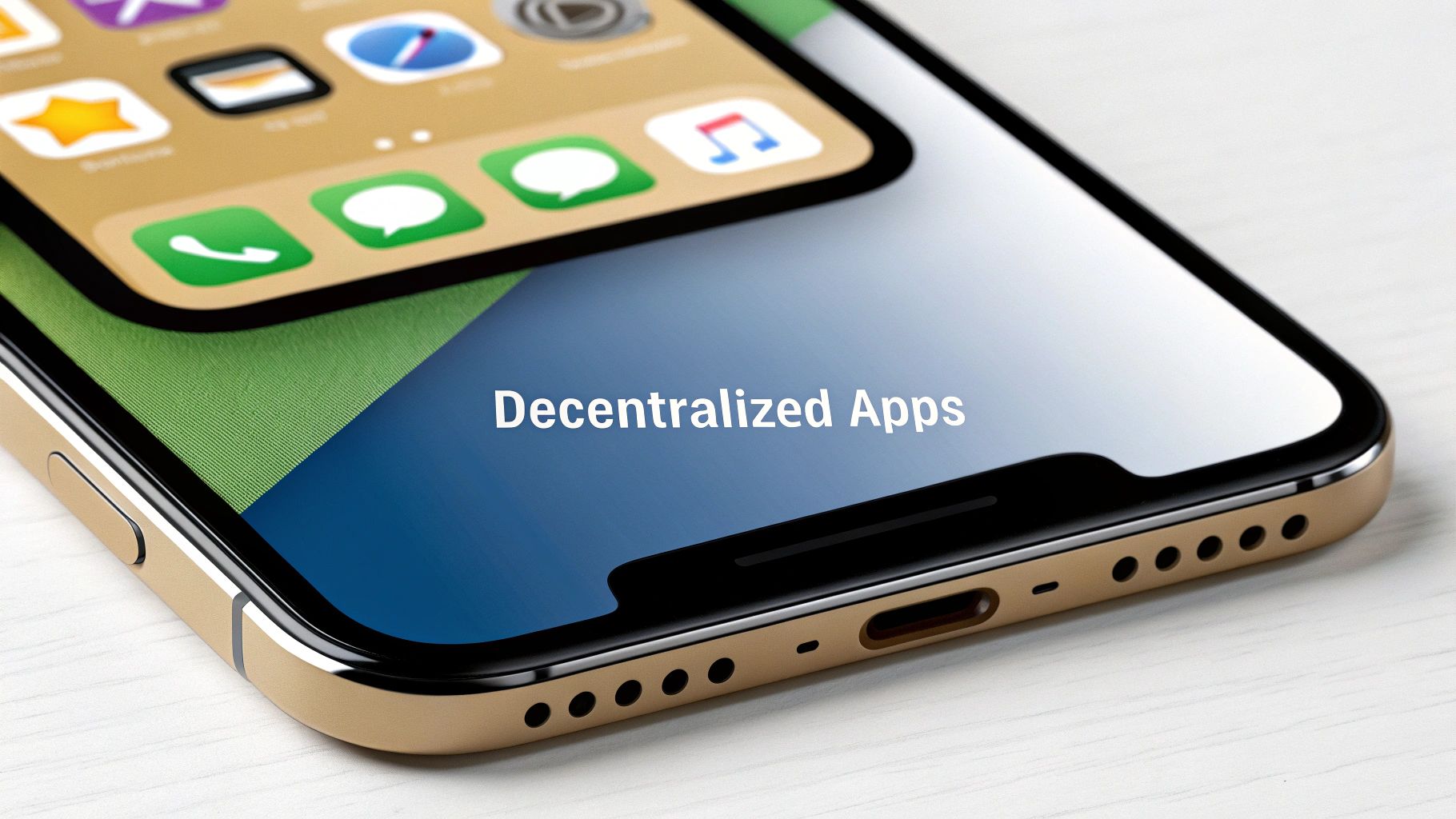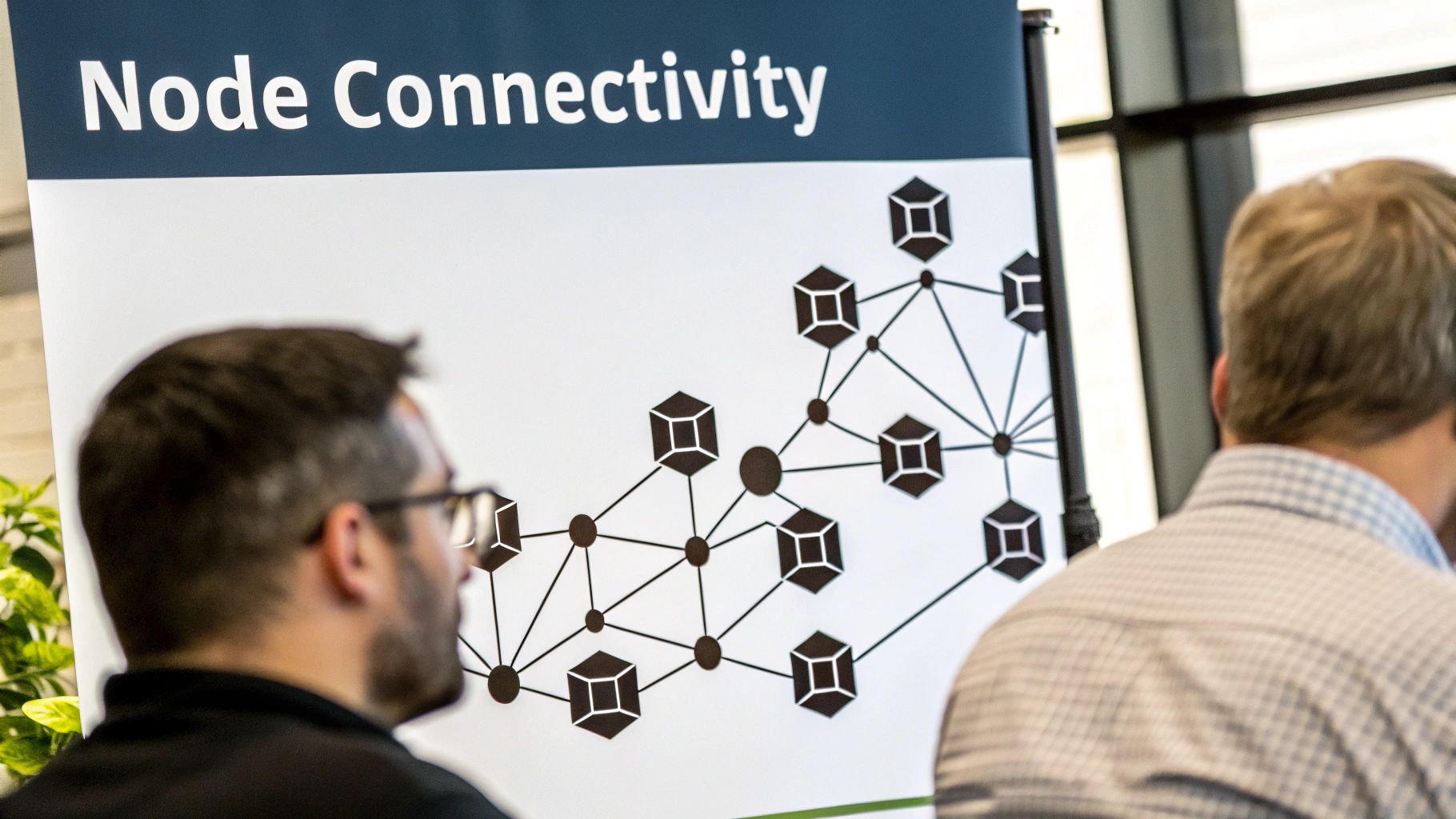Breaking Down Blockchain Fundamentals That Matter

Understanding core blockchain concepts is essential for building secure and effective decentralized applications. These foundational elements work together to create reliable blockchain systems. Let's examine the key components that make blockchain technology work.
Distributed Ledger Technology
At its heart, blockchain relies on distributed ledger technology (DLT) – a system where multiple computers maintain synchronized copies of the same database. Think of it like a shared spreadsheet that exists on many computers at once. This eliminates the need for any single controlling authority.
For example, in supply chain tracking, every participant can see and verify each step of a product's journey. Since all changes must be reflected across the entire network, tampering becomes extremely difficult. This creates a more secure and transparent system for all users.
Consensus Mechanisms
For a blockchain to function properly, all participants need to agree on which transactions are valid. This is achieved through consensus mechanisms – the rules that govern how the network reaches agreement. The two most common approaches are:
- Proof-of-Work (PoW): Used by Bitcoin, requires solving complex math problems to validate transactions
- Proof-of-Stake (PoS): Participants "stake" their cryptocurrency to earn the right to validate transactions, using far less energy than PoW
Cryptographic Principles
Cryptographic principles form the backbone of blockchain security. Two key elements are:
- Hashing: Converts any data into a unique string of characters. Even tiny changes to the input create completely different outputs, making it easy to detect tampering
- Digital signatures: Allow users to prove ownership and authorize transactions securely
The growth in blockchain development shows increasing interest in these principles. From 10,000 active developers in 2017, the number grew to 18,000 by late 2021. Notably, 70% of these developers were newcomers to the field. For more details, see blockchain sector statistics.
Smart Contracts
Smart contracts are self-executing agreements with terms written directly in code. They run automatically when specific conditions are met, similar to a vending machine dispensing items after receiving payment. This removes the need for middlemen and reduces disputes.
These contracts play a vital role in building decentralized applications (dApps) and automating complex processes. As we continue exploring blockchain development, we'll see how these fundamental concepts come together in real-world applications.
Creating Your Optimal Development Environment
A well-designed development setup is essential for building blockchain projects efficiently and effectively. The right environment can help you focus on writing code rather than wrestling with tools. Let's explore how to create a setup that will serve you well.
Essential Tools and Technologies
Every blockchain developer needs a core set of tools to be productive. Here are the key components you'll want to include:
- Truffle Suite: A development framework that helps compile, test and deploy smart contracts with minimal hassle
- Ganache: A personal blockchain for testing – like a private sandbox where you can deploy and test contracts without spending real money
- MetaMask: A browser wallet that connects you to blockchain networks and lets you interact with decentralized apps
- Remix IDE: A browser-based development environment made specifically for writing Solidity smart contracts
These tools work together seamlessly to give you everything needed for blockchain development.
Choosing the Right IDE
Your code editor is where you'll spend most of your time, so picking the right one matters. While Remix works well in the browser, many developers prefer desktop IDEs like Visual Studio Code or Atom. These editors support helpful plugins for Solidity and other blockchain languages – for example, VS Code's Solidity extension adds syntax highlighting and debugging tools.
Setting Up Your Local Blockchain
Testing on a local blockchain environment helps you catch issues early without spending real money. Ganache makes it easy to spin up your own private Ethereum network for development. This gives you a safe space to experiment with contracts and applications before deploying to production networks.
Streamlining Your Workflow With Automation
Smart automation saves time and reduces errors. The Truffle Suite includes tools to automate common tasks like compiling contracts, running tests, and handling deployments. This lets you focus more on writing code and less on repetitive manual steps.
Debugging and Troubleshooting
Good debugging tools help track down issues quickly. The debugging features in Remix and VS Code combined with strategic console logging in your dApp can highlight exactly where problems occur. Taking time to set up proper debugging and logging early will save many headaches later as your projects grow more complex.
Mastering Smart Contract Development

Building production-ready smart contracts requires understanding key development principles beyond just the basics. Let's explore the essential aspects of developing secure, efficient, and maintainable contracts that power real applications.
Writing Secure Smart Contracts
Security must be the top priority when developing smart contracts since even minor vulnerabilities can lead to major financial losses. Strong security practices need to be baked into every step of development.
Here are the key security principles to follow:
- Input Validation: Carefully check and sanitize all external inputs to protect against malicious data and unexpected behaviors
- Access Control: Put proper restrictions on contract functions so only authorized users can perform sensitive actions
- Code Simplicity: Write clear, straightforward code that's easy to audit and less prone to bugs
- Upgradeability: Design contracts to be upgradeable so you can fix issues post-deployment
For example, in a decentralized marketplace contract, you'd want strict access controls ensuring only the actual buyer and seller can trigger escrow releases.
Optimizing for Gas Costs
Every operation on networks like Ethereum costs gas fees. Making your contracts gas-efficient is crucial for keeping transaction costs reasonable for users.
Focus on these optimization areas:
- Data Structures: Pick storage-efficient data types and structures
- Function Calls: Minimize expensive external calls between contracts
- Loops: Be cautious with loops that could consume large amounts of gas
Small optimizations in your code structure and data types can lead to meaningful cost savings for users over time.
Organizing Code for Scalability
As contracts grow more complex, good code organization becomes essential. A well-structured codebase makes development and maintenance much smoother.
Key organizational practices include:
- Modularity: Split code into logical, reusable components
- Design Patterns: Use proven blockchain development patterns
- Documentation: Add clear comments explaining code functionality
Following consistent coding standards across your project also helps keep the codebase clean and manageable.
Testing, Debugging, and Upgrading Smart Contracts
Thorough testing on local environments and test networks helps catch issues early. Use tools like Ganache for local testing before deploying to testnets.
Build debugging workflows to efficiently track down problems. Have clear processes for safely upgrading contracts when needed. These practices are fundamental for maintaining production contracts long-term.
Preparing for Audits
Professional security audits are vital for any serious smart contract project. Prepare your code for auditing by:
- Maintaining comprehensive documentation
- Following consistent code structure
- Adhering to blockchain security best practices
Good preparation makes audits more efficient and improves your contracts' overall quality and security.
Building Engaging User Interfaces for Blockchain Apps

A strong backend is essential for blockchain apps, but the frontend interface is just as critical for success. Users need simple, intuitive ways to interact with complex blockchain functionality. This means carefully designing how users will connect wallets, monitor transactions, and understand what's happening in the application.
Seamless Wallet Integration
Getting users connected to your app through their crypto wallets is a make-or-break moment. Whether they use MetaMask, Trust Wallet, or other providers, the connection process must be smooth and error-free. Clear instructions, helpful error messages, and troubleshooting guidance go a long way in making users feel confident from their first interaction.
Intuitive Transaction Management
Once users are connected, they need clear visibility into their transactions. This includes showing real-time status updates, explaining gas fees in plain language, and providing easy access to transaction history. Think of popular payment apps – users should have that same level of clarity about what's happening with their assets. When users feel informed and in control, they're more likely to keep using your app.
Real-time Updates and State Management
Blockchain apps are dynamic, with constant state changes that users need to track. Progress bars, loading animations, and automatic data refreshes help create a responsive feel. Clear visual signals for success, errors, and pending actions keep users oriented. For example, a decentralized exchange needs to show instantaneous price updates and order status changes to be truly useful.
Effective Error Handling and User Feedback
Even the best apps encounter errors, but good error handling makes all the difference. Skip the technical jargon and provide clear explanations with actionable solutions. If a transaction fails due to low gas, tell users exactly how to fix their gas settings. This turns potential frustration into a learning opportunity that builds user confidence.
Optimizing Performance for a Smooth Experience
Speed and responsiveness are essential, especially for financial applications. Smart optimization of your frontend code, data requests, and blockchain interactions creates a fluid user experience. Techniques like caching frequently accessed data and efficient UI rendering can make a big difference. Fast load times and smooth interactions encourage users to fully explore your app's capabilities and keep coming back.
Implementing Comprehensive Testing Strategies
Smart contracts and decentralized applications need robust testing before deployment. Testing isn't just about checking if code works – it's about making sure your blockchain applications can handle real scenarios safely and reliably. Let's explore the key testing approaches used by experienced blockchain teams.
Unit Testing: Ensuring Individual Components Work
Unit testing examines individual pieces of code in isolation. For smart contracts, this means testing specific functions one at a time. Take an auction contract – you'd write tests to verify bid placement, winner selection, and fund distribution work correctly on their own. Unit tests catch issues early before components are combined.
Integration Testing: Connecting the Pieces
After unit testing, integration testing verifies that components work together properly. This is especially important for blockchain apps since smart contracts often need to interact. For example, when building a decentralized exchange, integration tests would check if trades execute correctly between contracts and if the order book updates accurately.
End-to-End Testing: Simulating Real-World Use
End-to-end (E2E) testing replicates how real users will interact with your application. This tests everything together – the interface, smart contracts, and supporting systems. For a supply chain app, E2E tests would follow a product's full journey from origin to delivery, confirming all blockchain data is recorded and displayed properly.
Simulating Network Conditions and Edge Cases
Blockchain networks can experience delays and node failures. Good testing includes simulating these challenges. Testing edge cases – unusual scenarios that might break things – helps find hidden vulnerabilities. Examples include testing extremely large transactions or attempting security exploits.
Continuous Integration and Automated Testing
Professional blockchain teams use continuous integration (CI) systems. These automatically run all tests whenever code changes, catching problems quickly. This saves time compared to manual testing and helps maintain consistent code quality throughout development.
Real-World Testing Scenarios: Preventing Catastrophe
Real examples show why thorough testing matters. Consider a DeFi project that didn't properly test loan liquidation edge cases. A market swing could trigger unexpected behavior and major losses. Through comprehensive testing – including simulated market conditions and stress tests – teams can avoid such problems. Good testing creates stable, secure blockchain applications that users can trust.
Launching Your Decentralized Application

Moving your blockchain application from development to production is an exciting but complex process. Let's explore the key steps to successfully deploy and maintain your dApp, from selecting the right network to keeping your application running smoothly.
Choosing the Right Network
The blockchain network you select will directly impact your application's performance and costs. Each network offers different benefits – some prioritize speed, while others focus on lower fees or stronger security. For a payment-focused dApp, you might prioritize low transaction costs, while a gaming application may need faster processing speeds.
Key factors to evaluate include:
- Transaction Throughput: The number of transactions the network can process per second
- Gas Costs: Average fees users will pay for transactions
- Security: The network's consensus model and security track record
- Community: Size and activity level of the developer ecosystem
- Tooling: Available development tools and resources
Take time to analyze these factors, as they'll shape your users' experience and your operating costs.
Optimizing Gas Usage for Deployment
Smart contract deployment and execution costs can add up quickly. Before launch, review your code for gas efficiency by:
- Using simpler data structures where possible
- Reducing external contract calls
- Running gas analysis tools to find optimization opportunities
Small improvements in gas usage can lead to significant cost savings at scale.
Scaling Your Infrastructure
As your user base grows, your infrastructure needs to keep pace. Plan ahead by:
- Setting up load balancing across multiple servers
- Optimizing database queries and indexes
- Monitoring system resources and scaling proactively
Having the right infrastructure ensures your dApp stays responsive under increasing load.
Monitoring and Maintenance Post-Launch
Once live, closely track your application's health and performance. Create dashboards to monitor:
- Transaction Volume: Number and value of processed transactions
- Error Rates: Failed transactions and system errors
- Gas Usage: Cost trends and optimization opportunities
- User Activity: Active users and key features used
- System Performance: Response times and resource utilization
Regular security reviews help identify and fix potential vulnerabilities before they can be exploited.
Managing Upgrades and Security
Updating blockchain applications requires careful planning to avoid disrupting users. Consider using upgradeability patterns like proxy contracts that let you modify logic while preserving user data. Test upgrades thoroughly in staging environments before deploying to production.
Handling Emergency Responses and Community Management
Have clear procedures ready for handling unexpected issues like:
- Security incidents
- Network outages
- Smart contract bugs
- User complaints
Build strong relationships with your community through:
- Regular updates on development progress
- Quick responses to user feedback
- Clear communication during incidents
- Community involvement in governance decisions
Success in blockchain development comes from consistent improvement and active community engagement. By following these guidelines while launching and maintaining your dApp, you'll be well-positioned to build a thriving blockchain application. For more blockchain development insights and updates, visit LockBTC.
Article created using Outrank


